12:43am: Foreboding And Beautiful All At Once
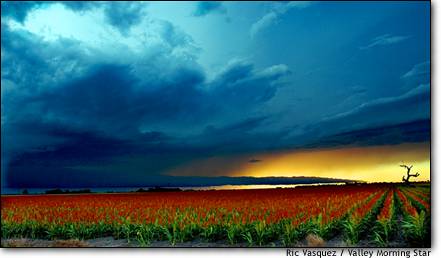
"Blessed bluster: Storm clouds move over Willacy County, Texas, May 29. The system brought welcome rain to the county's drought-stricken fields." (from MSNBC's The Week In Pictures)
10:55am: Last Column Removed From Ground Zero
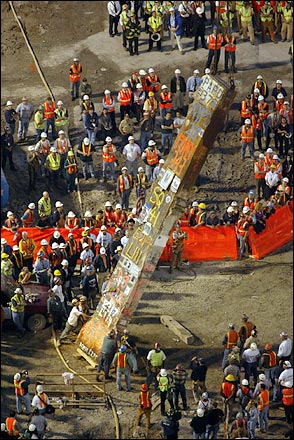
"Column No. 1,001 B of 2 World Trade Center, the last symbolic piece of the unfathomable recovery effort, was cut down at 8:17 p.m. yesterday by operating engineers, ironworkers, teamsters, laborers and dock builders." (From The New York Times, By CHARLIE LeDUFF)
Noon: Sometimes Great Photos Tell Tragic Stories

Photo by Jeff Mitchell/Reuters
"A large span of Interstate 40 in Oklahoma lies in the Arkansas River May 26, 2002, after a barge hit the moorings and pitched as many as 12 vehicles into rain-swollen waters below the heavily traveled highway bridge. Rescue workers were attempting to reach the occupants of half a dozen cars and two tractor trailers that dropped into the river 60 miles south of Tulsa after a 500-foot section of the bridge gave way after being rammed by an empty oil barge." (Excerpt from Lycos News, story by Ben Fenwick)
Next Day: It's Gonna Be A Great Summer
Dash Sailing: Journal & Photos
Summer 2002
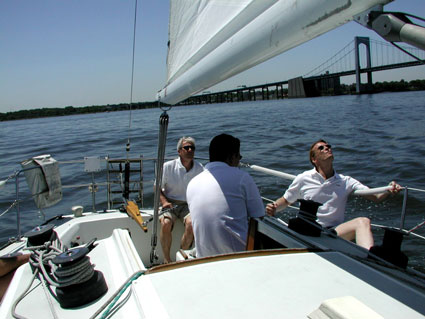
Eamon, Roman & Neil, Sailing On The Sound
Sat. May 25:
My cell phone rang at 7:25am as I was headed out the front door. It was Neil.
"I'm in the cab."
"I'm on the street."
A minute later I was climbing into the back of a yellow cab, headed for Penn Station & the LIRR for a day of sailing on Long Island Sound. A strong cup of joe, raisin muffin, and quick 30 minute ride later and we were out at Little Neck where Neil's pal Chris picked us up after his own drive in from the Hamptons. We stopped for cold cuts while Neil's other pal Roman was getting water and beer. Eamon, whose boat we would be sailing, met us on the docks and we all jumped into cars and headed down the road to a private beach for some reconstructive therapy on the harbor launch, which had sprung loose from its mooring during the night and drifted down the inlet to a neighbor's beach. We hopped and pushed and pulled and lurched and together the six of us somehow cajoled the thing back into the drink, even without the tide. After that, Neil and Chris and I were waiting for Roman to arrive, so Eamon went for some coffee and Neil and I had some fun with Chris, a newcomer to sailing:
"Neil, which one are we sailing on?" I asked.
Neil looked out across the bay. "The one with the red sail cover," he said, pointing straight out across the harbor, nearly to the channel.
"Okay, I'll go first," I said, stripping off my jacket. "Unless you want to go. Or Chris, you can go first if you want. Are you a strong swimmer?"
Chris's face went blank, and for a second we had him going, before he realized we were putting him on.
Anyway, half an hour later we were out on Eamon's boat "Dash," raising the mainsail, unfurling the Genoa, releasing the jib sheets and tiller, and heading up into the wild blue.
We sailed upwind and tacked a few times, just to shake out the sheets, and then Eamon found a line and we sailed along for a while, just digging the sun and the waves and the vibe. Eamon was at the helm--a tiller in the case of this wonderful, mid-80's J-35. Roman was to starboard, tailing, and Chris was to starboard (closer to the companionway) winching. I was tailing to portside, and Neil was below decks, tending to his instrument panel. All was calm and peaceful, the sun burning down through a tall, cloudless (and, sadly, mostly windless) sky, with air temp in the mid-60's. I was gazing off into the distance when suddenly I heard something hit the deck and, before I could even look up, the unmistakeable "plit" of some object going into the drink. Across the cockpit sat a statue of Chris, his face wearing a mask of horror and disbelief, looking for all the world as if he'd just dropped...well, imagine this:
A young man works and saves seven years to buy his girl the biggest engagement ring he can afford, and it's as big as the hope diamond, like three carats of the finest diamond money can buy, we're talking thousands of dollars, here, a stone the size of a cell phone ladies and gentlemen. Now, he's never been sailing before but his pals invite him to crew this summer out on the Sound, he'll love it they assure him, come on out, you're gonna have a great time. Well, so far so good. But the man has not sailed before, is unaccustomed the the unforgiving nature of the sea. He is laying back up on the starboard deck, his feet on the cockpit bench, his shoulders layed back on the lifeline. The helmsman is steering a steady course upwind, there is a temporary and misleading lull in the action. His friend Roman is beside him, so the man decides what better time to show him the ring, which he has brought with him in the pocket of his shorts. He reaches down into his pocket, feels with his fingers enough to open and grasp the ring out of the little snap case all such rings come in (doesn't want to get the little velvet case wet, naturally), pulls the ring out ever so gently between his thumb and forefinger just as the boat rises on the wake of a motor boat that sped by a minute earlier, the hull crashes down with a thud (as sailing vessels will do), his grip is jarred, the ring falls to the deck and (as he is sitting to starboard on a starboard tack and the boat is heeling well to starboard) slides along the deck, clearing the grab rail by half an inch and slipping quickly and irretrievably into the murky brine, the man's bewildered hand reaching after it in vain, and the expression on his face...that's the look I'm talking about.
Can you imagine, people, that expression? Well, that is the expression I saw on Chris's face when I heard the telltale flep and looked up. He stayed that way a moment longer, like the chagrined lover on Keats' Grecian Urn, reaching after a prize that was destined to elude him for eternally. Then he awakened to the moment.
"I just dropped my phone in the water," he said to us, wondering (a) if it would float and (b) if we could go back for it, the answer to (b) being yes if only the answer to (a) were also yes, but, of course...
(You thought he actually dropped a 3-carat diamond into the drink, didn't you. Well, people, I was just searching for the proper experssion, I mean, I just met the man, I don't even know if he has a girlfriend, let alone a fiance. Of course, we assured Chris that if he had dropped a 3-carat diamond into Long Island Sound he could have used what every sailor gets: one, non-refundable, "drain-the-pond" call to the harbormaster. But we explained that cell phones do not qualify for the drain-the-pond exemption.)
Well, Chris took it exceptionally well. The color eventually returned to his skin and he was able to breathe without the aid of the respirator. We called the Coast Guard and they arranged for his friend to fly in from Chicago to stay with him. We sailed back to the Yacht Club to drop him off, and he waved to us from the launch as we headed back to sea, the red tube from his I.V. waving back and forth over the waves like a pendulum clicking toward a dial tone as he faded from our sight beyond the horizon.
"He didn't take the beer, did he?" someone said.
"I don't think so, but you better check the lunch meat."
So back we went, out onto the Sound, and the rest of the day was spent sailing wonderfully through the harbor, lying on the deck when the wind was resting, and testing the sails when it was playful. And though I do not mean to suggest that we sat around poking fun at Chris's episode of The Twilight Phone, I do believe we counted a final tally of 36 punch lines involving the demise of said electronic device.
Anyway, Eamon had to get back ashore, so we headed for the harbor (just as the wind picked up) and Neil, Roman and I stayed aboard the boat after Eamon went in, just enjoying the water and the sun. Neil made huge sandwiches for the three of us with the rest of the supplies, and we cranked up C.S.N.Y's "Deja Vu" to the legal limit and just dug the vibe and the company for another hour on the water. After that we called for the launch, Roman drove us to the station, and we caught the LIRR backa to the city, cabbed it to Mo's Caribbean for a quick visit with the home crew, and that was the finishing touch on a wonderful day on the water with a great boat and crew, and the beginning of what looks to be a fabulous summer of sailing.
Check back every week on 2 Idiots In A Boat (the Dash Sailing Journal & Photo Pages), I will post journal entries and photos after each day of sailing.
Click for Dash Sailing Photos
11:37pm: Happy Birthday Bob
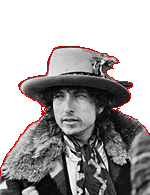
So Bob Dylan is 61 years old today. Happy Birthday Bob. And through it all Bob Dylan has done what he has always done: write songs. He has continued, through the years, putting his unique poetry to music unlike anyone before him or since, and performing, continuously, like some kind of natural wonder. Certainly he has changed, but he has not changed what he has always done and continues to do. It is left to us to reinvent him, those that feel a need to do so. For me, like Herman Hesse's Siddhartha, and in Dylan's own words, "I'll just sit here and watch the river flow."
Favorites
I guess even people who aren't into Dylan probably have a favorite Dylan song, might not even know he wrote it, but let's face it, he's written some of the great anthems of modern times. Back when they were written, when he was a young man in his 20's, they were simply anthems of a generation, the sixties. But they are with us still, redefining our times even to this day, with songs like A Hard Rain's A-Gonna Fall, The Times They Are A-Changin, Blowin In The Wind, Don't Think Twice, It's All Right, It Ain't Me Babe, Subterranean Homesick Blues, Mr. Tamborine Man, and the anthem of them all Like A Rolling Stone.
But everyone picks those, so I'm gonna pick a favorite Dylan song that's a little off the beaten track: Brownsville Girl off the 1986 Knocked Out Loaded, and co-written with American playwrite and actor Sam Shepard. It's a beautiful 12-minute romp of a road song, telling a story like a troubadour and summoning Keroac and Cassady and a whole beat generation gone south for the winter. Second Place would be "Watching The River Flow" first released (the first instant greatest hit) on Greatest Hits Vol. 2, and Honorable mention on the "Off The Beaten Path" list would be "Changing Of The Guard" off the 1978 Street Legal.
My Favorite Dylan album cover is without a doubt 1975's Desire, with a great head shot of a wind-blown Dylan with some kind of big, fur-collared winter coat, denim shirt, grey flat-brimmed cowboy hat, and leopard-skin spotted silk scarf blowin in the wind. Classic photo, and correct me if I'm wrong:
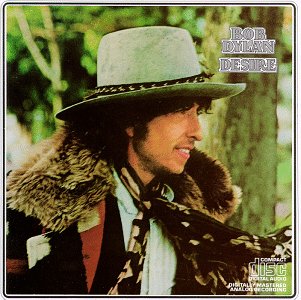
My Favorite Dylan Album Cover
Favorite Recorded Moments
No.1: The beginning of "Bob Dylan's 115th Dream" off the 1965 Bringing It All Back Home, and you can click for the audio, but you'll have to boot up the cd to hear what I'm talking about, because Dylan plays a measure of guitar intro and starts singing and then busts out laughing. The producer is laughing, he says "Okay, take two" and they start again and it's all on on the record, hilarious!
...to be continued
I'm not done with this page, so keep checking back to this post if you're interested, as I'll be posting to it during the week, in addition to my regular daily posts, and adding more personal favorites, favorite lyrics, concert memories, and the like. See you then...
8:26am: Knocked Out Loaded to Love And Theft
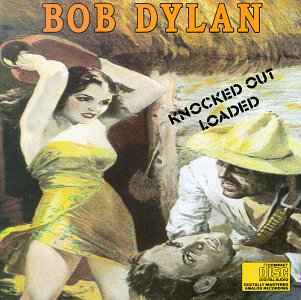
"Check out the wild, twelve-minute Dylan-Sam Shepard road song "Brownsville Girl" (from 1987's Knocked Out Loaded) or the hallucinatory Oh Mercy outtake "Series of Dreams" (from the revelatory, career-spanning three-CD set The Bootleg Series) to hear the best of the latter-day Dylan. Then there are the two fast and funny Traveling Wilburys albums, which catch Dylan--along with superstar pals George Harrison, Tom Petty, Jeff Lynne, and (on the first record) Roy Orbison--in an uncommonly lighthearted mood. He followed up 1990's Under the Red Sky with two albums' worth of old folk and blues covers: 1992's Good As I Been to You and 1993's World Gone Wrong. While both are largely satisfying efforts, they didn't win him many new fans.
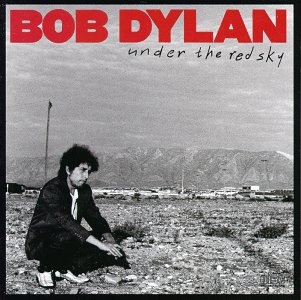
Early in 1997, though, those who lived in hope of an artistically born-again Dylan had cause for optimism: musician Jim Dickinson told a Memphis newspaper that he had played on some recent, Daniel Lanois-produced Dylan sessions featuring new material Dylan had composed while stuck at home in Minnesota during a blizzard. According to Dickinson, one cut was seventeen minutes long, and overall the material was "so good, I can't imagine he won't use it. The seventeen-minute song turned out to be "Highlands," the closing cut on the critically acclaimed Time Out of Mind, which was released in September and became Dylan's first gold record of the decade.

The success of the album was noteworthy, but 1997 will go down as the year that Dylan knocked on heaven's door, literally: in May, on the eve of a European tour, he was hospitalized with histoplasmosis, a potentially fatal infection that creates swelling in the sac surrounding the heart. Happily, the songwriter made a rapid recovery, and was back on the road by August and continued to tour through the remainder of the year, including a September date in Rome at the behest of Pope John Paul II. In early December, Dylan was one of five recipients of his country's highest award for artistic excellence, the Kennedy Center Honors." (Bio courtesy of BobDylanBiography.8k.com)
Since then, and last, but not least, Dylan's 2001 release "Love And Theft," and not to forget his Academy Award Winning song "Things Have Changed" from the soundtrack of "Wonder Boys."
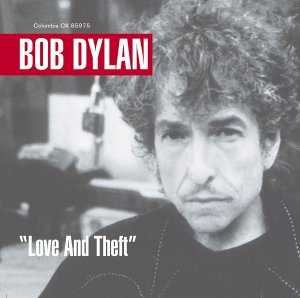
All in all, the most astonishing and influential career in music history, and you could look it up.
(Coming tomorrow...Dylan's birthday, a look back at personal favorites and reminiscences.)
10:37am: Blood On The Tracks to Oh Mercy
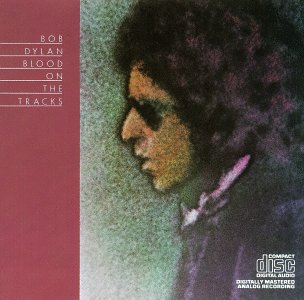
"While the tour seemed to reinvigorate Dylan's creative spirit, his personal life was in a shambles. He and Sara had separated, and Dylan's confusion, pain, and anger over their split infused the songs he was writing with a rare passion. The result was Blood on the Tracks, perhaps the most mature, moving, and profound examination of love and loss ever committed to record. Stunning songs like "Tangled Up in Blue," "Idiot Wind," and "Shelter From the Storm" were not strictly autobiographical, but their emotional turbulence clearly reflected Dylan's anguished state of mind. His second straight No. 1 album, Blood on the Tracks didn't merely match the brilliance of Dylan's sixties output--in terms of eloquence and emotional authority, he had reached new heights.

Later that year, a truncated version of The Basement Tapes was finally released, and was hailed as a found masterpiece. Another tour soon followed--the ragtag Rolling Thunder Revue, which featured old friends like Joan Baez and Roger McGuinn, and new ones such as T-Bone Burnett and playwright Sam Shepard, who was recruited to write a screenplay to be shot on the road. (The resulting film, the mostly unscripted Renaldo and Clara, was a confused four-hour debacle that received very limited distribution in 1978.) Mid-tour, Dylan released Desire, which was his third consecutive No. 1 album; it featured the single "Hurricane," dedicated to the wrongly imprisoned boxer Rubin "Hurricane" Carter. While nowhere near as impressive as Blood on the Tracks, Desire was a well-crafted, evocative effort that contained at least two great songs: the playfully cinematic "Black Diamond Bay," and the plaintive, heartfelt ode to his estranged wife, "Sara." The song did not win her back: Dylan and Sara divorced the following year.
Dylan's first post-divorce album, Street Legal, did not bode well for the future. Overproduced and lyrically senseless, it was even worse than Self Portrait, and the world tour that followed was a pale shadow of the Before the Flood and Rolling Thunder shows. At thirty-seven, Dylan seemed, both personally and professionally, at loose ends. Even so, his next move took the world by surprise: embracing fundamental Christianity, he released the overtly born-again album Slow Train Coming. Much to the surprise of his critics, the record was a commercial success, reaching No. 3 on the charts, spawning the hit single "Gotta Serve Somebody," and earning Dylan his first Grammy award, for Best Male Rock Vocal Performance.
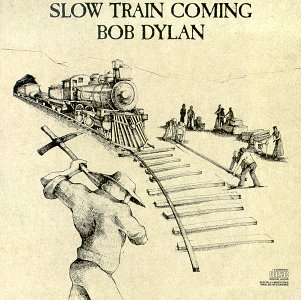
The tour that followed was a fire and brimstone affair that managed to alienate many of Dylan's longtime fans, and his next album, Saved, failed to crack the Top 20. For the faithful, though, his next record, Shot of Love offered signs of hope: "Every Grain of Sand" was a gorgeous, philosophical ballad that took a far more forgiving tone than his past two albums, while "The Groom's Still Waiting at the Alter" (the non-LP B-side to the single "Heart of Mine") was a barn-burning rocker that would have fit nicely on Highway 61 Revisited.
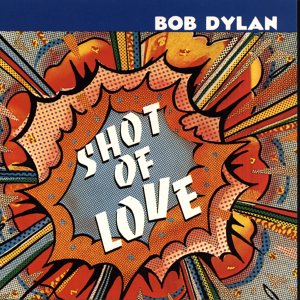
Infidels (1983) continued the positive trend: co-produced by Dire Straits frontman Mark Knopfler, whose graceful guitar work made it Dylan's best-sounding record ever, it was also his finest sustained collection of songs since Blood on the Tracks. Veering away from the overtly religious material of his last three albums, Dylan recaptured the complexity and emotional subtlety of his best work on songs like "Jokerman" and "Don't Fall Apart on Me Tonight." Empire Burlesque, his self-produced follow-up to Infidels, was almost as good, ranging from the blistering soul of "Tight Connection to My Heart" to the gentle acoustic ballad "Dark Eyes," with only a few missteps.
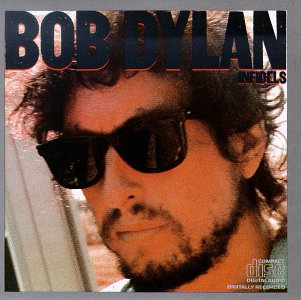
While Dylan had toured regularly since returning to the stage with the Band in 1974, beginning in the mid-eighties he hit the road full-time, first with all-star cronies Tom Petty and the Heartbreakers and the Grateful Dead, then, starting in 1988, with a small rock combo led by guitarist and Saturday Night Live musical director G.E. Smith. Shows on the so-called Never Ending Tour were generally sloppy, and Dylan tended to mumble his songs and glower at his audiences, but he stuck with it--nine years later, he's hardly spent a month off the road. The original work he's released over the last decade has continued to contain flashes of genius, but only the Daniel Lanois-produced Oh Mercy worked to any sustained effect." (Bio quoted from BobDylanBiography.8k.com)
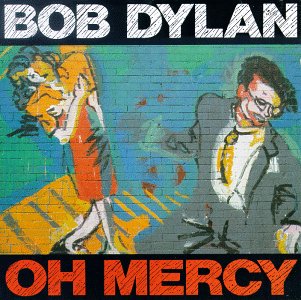
(coming next: Knocked Out Loaded to the Traveling Wilburys)
2:05am: Freewheelin' to Planet Waves
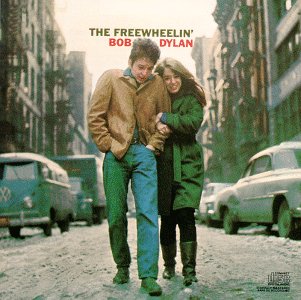
"Promising as that first album was, it didn't prepare anyone for the masterpiece that came next. The Freewheelin' Bob Dylan, released in 1963, contained two of the sixties' most durable folk anthems, "Blowin' in the Wind" and "A Hard Rain's A-Gonna Fall," the breathtaking ballads "Girl From the North Country" and "Don't Think Twice, It's All Right," and nine other originals that marked the emergence of the most distinctive and poetic voice in the history of American popular music. Cementing his reputation was Peter, Paul, and Mary's folksy cover of "Blowin' in the Wind," which went to No. 2 on the pop singles chart.
Dylan's next album, The Times They Are A-Changin', provided more of the same: the title cut and "The Lonesome Death of Hattie Carroll" were the standout protest songs, while "Boots of Spanish Leather" was his saddest and most graceful love song so far. At the same time, Dylan seemed to be tiring of his position at the forefront of the protest movement: in "Restless Farewell," the record's last song, he concluded that he'd "bid farewell and not give a damn." Sure enough, his next album, pointedly titled Another Side of Bob Dylan, was his most introspective and least topical to date, and its finale, "It Ain't Me Babe," was an even more explicit goodbye to the folk movement he had helped reinvigorate.
The most revealing song on Another Side was "Ballad in Plain D," which painted a harsh, one-sided, blow-by-blow picture of Dylan's breakup with his longtime girlfriend Suze Rotolo, who can be seen on his arm in happier days on the Freewheelin' album cover. (More than twenty years later, Dylan said this was the one song in his catalogue that he wished he hadn't released.) Shortly after his split with Rotolo, he became involved with the world's most famous folk diva, Joan Baez. The relationship proved beneficial for them both, as Baez raided Dylan's unreleased material for her albums and introduced him to thousands of fans at her concerts.
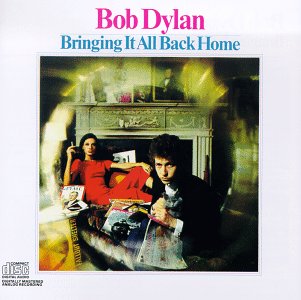
At the same time, Dylan was itching to move beyond the acoustic musical constraints the folk movement imposed. Early in 1965, he went into the studio with a nine piece band and recorded Bringing It All Back Home, a half-electric, half-acoustic album of complex, incisive, biting songs like "Subterranean Homesick Blues" (featuring the trademark line, "You don't need a weatherman to know which way the wind blows"), "Mr. Tambourine Man," and "It's All Over Now, Baby Blue. A week after Dylan cut Bringing It All Back Home, the Byrds electrified his acoustic "Tambourine Man," and by the time it reached the top of the charts the term "folk-rock" had become part of the contemporary lexicon.
Dylan's own transition from folk troubadour to rock bard was not quite so smooth: debuting his new material with the Paul Butterfield Blues Band at the 1965 Newport Folk Festival, he was famously booed off the stage. Such resistance notwithstanding, Dylan's fame had long since eclipsed Baez's, and their relationship was starting to crumble. (D.A. Pennebaker's documentary Don't Look Back was filmed during this period, and it clearly shows the tension between Dylan and Baez.) He had begun to see Sara Lowndes, a friend of his manager Albert Grossman's wife, and by the end of the year would marry her. In the meantime, he recorded and released the album Highway 61 Revisited, which contained the monumental single "Like a Rolling Stone." Clocking in at more than six minutes, it was the longest, angriest song ever released on a 45, and it reached No. 2 on the Billboard singles chart.
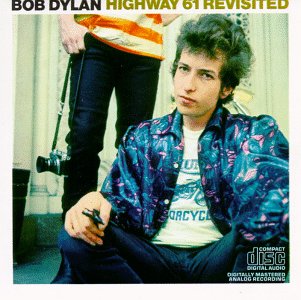
Next up was Blonde on Blonde, a two-record set recorded in Nashville in early 1966, which took the stream-of-consciousness lyrics and edgy rock sounds of Highway 61 Revisited to the next level of artistry. From the raucous party rock of "Rainy Day Women #12 & 35" to the rambling, hallucinogenic folk 'n' blues of "Stuck Inside of Mobile With the Memphis Blues Again" to the poignant, apocalyptic balladry of "Visions of Johanna" and "Sad Eyed Lady of the Lowlands," Blonde on Blonde took rock and roll to places no one else had even dreamed of. A tour of England with the Hawks (who would later change their name to the Band) produced music that was even wilder and more astonishing, though many of Dylan's old fans continued to be baffled. The tour reached its peak at the Manchester Free Trade Hall on May 17, 1966, when the combo recorded a live set that was bootlegged--and mis-titled--as Live at the Royal Albert Hall. (If you're lucky enough to find the two-CD bootleg Guitars Kissing & the Contemporary Fix-- which features a pristine recording of the entire show--buy it; it's the greatest album never released.)
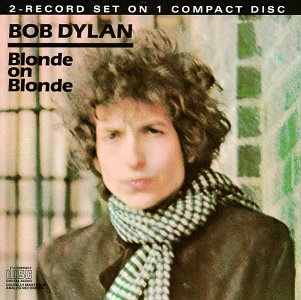
By this time, Dylan was routinely being hailed as the most important voice of his generation, but he was reaching a breaking point; he was, after all, only twenty-five years old. "The pressures were unbelievable," he would later tell biographer Anthony Scaduto. "They were just something you can't imagine unless you go through them yourself. Man, they hurt so much." A near-fatal motorcycle accident on July 29, 1966, proved a blessing in disguise, allowing Dylan to retreat to the solitude of his home in Woodstock, New York, with Sara and their newborn son Jesse to reevaluate his career and priorities. (The Dylans would ultimately have four children, with Bob adopting Sara's daughter from a previous marriage; Jakob, the youngest, is now the leader of the popular band the Wallflowers.)
A few months later, the Hawks joined him at Woodstock, and they began recording the loose, country-flavored tracks that would be bootlegged (and released eight years later) as The Basement Tapes. Dylan's next official release, though, was the even more low-key John Wesley Harding. Recorded in Nashville with a three-piece backing band, John Wesley Harding was widely considered to be Dylan's pointed reaction to the Beatles' musically and technically complex landmark LP Sgt. Pepper's Lonely Hearts Club Band--an interpretation he naturally denied.
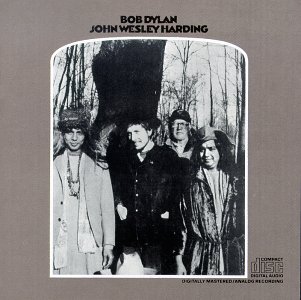
While John Wesley Harding earned glowing reviews and reached the No. 2 spot on Billboard's album chart (making it his most commercially successful album to date), it also painted Dylan into an artistic corner. Gone was what he called his "thin wild mercury sound," and gone were his outlandish, visionary lyrical flourishes; the simple, often elegant songs that he was now writing could not support the hype that painted Dylan as one of the twentieth century's great poets. Nashville Skyline, his next album, seemed to revel in disappointing fans' expectations: it was a straight country record, and despite some lovely songs (especially "I Threw It All Away") and a hit single ("Lay Lady Lay") it was seen as Dylan's first real artistic misstep.
As it turned out, Nashville Skyline was just the beginning of Dylan's slide in the eyes of the critical establishment. Self Portrait, the two-record set which followed in 1970, was viewed as a genuine disaster: "What is this shit?" Greil Marcus asked in his Rolling Stone review. New Morning, released four months later, was a comeback of sorts--it was at least listenable--but it was a far cry from Dylan's best work. The release of his long-awaited book Tarantula in 1971 didn't do anything to rehabilitate his reputation in hip circles. Even his inspiring set at the George Harrison-organized Concert for Bangladesh- Dylan's first American concert appearance since his motorcycle accident five years earlier--seemed to hint at artistic confusion: he didn't perform a single song written after 1966.
Seemingly floundering, Dylan accepted an invitation from legendary Western filmmaker Sam Peckinpah (The Wild Bunch) to appear in and compose the score for his new film, Pat Garrett and Billy the Kid, which was filming in Mexico and would star Dylan's friend Kris Kristofferson. The shoot was not a pleasant experience: the Mexican location proved difficult, Peckinpah was preoccupied with studio politics (the film was eventually taken out of his hands and recut), and Dylan floundered in the role of Billy's sidekick, Alias. But the soundtrack album was a success, and the single "Knockin' on Heaven's Door" broke the Top 20 (and went on to become one of Dylan's most covered songs).
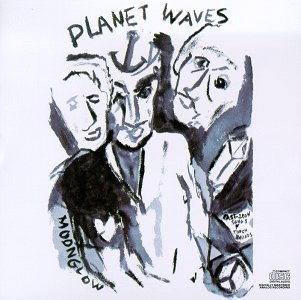
At this point, it had been seven years since Dylan's motorcycle accident, and he had not mounted a full-scale tour since. In the summer and fall of 1973, he and the Band started rehearsing the Dylan songbook for a comeback tour, and in early November they took a few days off to record the album Planet Waves. It was a hasty, underwritten effort, but that didn't stop it from shooting to the top of the charts after Dylan and the Band hit the road for a nationwide tour in January of 1974. (Planet Waves was, in fact, Dylan's first No. 1 album ever.) The concerts were the stuff of legend, and promoter Bill Graham said that there were mail-order requests for more than twelve million tickets, though only 658,000 seats were available for the forty shows. An acclaimed two-record live set, Before the Flood, came out within a few months of the tour, and made it to No. 3 on the charts." (Bio quoted from BobDylanBiography.8k.com)
(coming tomorrow...Blood On The Tracks)
3:07am: The Early Years

Bob Dylan
It's Dylan Week: All Dylan, All Week, leading up to Friday, May 24, his 61st birthday. We'll be sharing a little Dylan every day, including photos, lyrics, albums, quotes, stories, and about 20 lbs. of headlines, so check in frequently, this is a collage of an homage, a work in continuous progress, and I will be updating and adding to it constantly, between fits and starts of writing my own meaningless drivel (and a little softball thrown in for extra measure).
We'll start at the beginning, but not without an appreciative note of attribution for DylanBiography.8k.com, from which this wonderful biography was appreciatively quoted...
"The grandchild of Jewish-Russian immigrants, Dylan was born Robert Allen Zimmerman, on May 24, 1941, in Duluth, Minnesota, where his father, Abe, worked for the Standard Oil Company. In 1947, the Zimmerman family moved to the small town of Hibbing, where an unexceptional childhood did little to hint at the brilliance to come. Robert started writing poems around the age of ten, and taught himself rudimentary piano and guitar in his early teens.
Falling under the spell of Elvis Presley, Jerry Lee Lewis, and other early rock stars,he started forming his own bands, including the Golden Chords and Elston Gunn and His Rock Boppers. According to the 1959 Hibbing high school yearbook, his goal was "to join Little Richard." The young Zimmerman left Hibbing for Minneapolis and the University of Minnesota in the fall of 1959. The sights and sounds of the big city opened new vistas for him, and he began to trace contemporary rock and roll back to its roots, listening to the work of country, rock, and folk pioneers like Hank Williams, Robert Johnson, and Woody Guthrie.
The following year, he dropped out of college and went to New York with two things on his mind: to become a part of Greenwich Village's burgeoning folk-music scene, and to meet Guthrie, who was hospitalized in New Jersey with a rare, hereditary disease of the nervous system. He succeeded on both counts, becoming a fixture in the Village's folk clubs and coffee houses and at Guthrie's hospital bedside, where he would perform the folk legend's own songs for an audience of one. Spending all of his spare time in the company of other musicians, Dylan amazed them with his ability to learn songs perfectly after hearing them only once. He also began writing songs at a remarkable pace, including a tribute to his hero entitled "Song to Woody."
Indeed, his interest in music had become so intense that he rarely found the time to go to class. He began to perform solo at local nightspots like the Ten O'Clock Scholar cafe and St. Paul's Purple Onion Pizza Parlor, honing his guitar and harmonica work and developing the expressive nasal voice that would become the nucleus of his trademark sound. It was around this time, too, that he adopted the stage name Bob Dylan, presumably in honor of the late Welsh poet Dylan Thomas, though this is an origin he has continued to deny throughout his career.
In the fall of 1961, Dylan's legend began to spread beyond folk circles and into the world at large after critic Robert Shelton saw him perform at Gerde's Folk City and raved in the New York Times that he was "bursting at the seams with talent." A month later, Columbia Records executive John Hammond signed Dylan to a recording contract, and the young singer songwriter began selecting material for his eponymous debut album. Not yet fully confident in his own songwriting abilities, he cut only two original numbers, rounding out the collection with traditional folk tunes and songs by blues singers like Blind Lemon Jefferson and Bukka White. The result (released early in 1962) was an often haunting, death-obsessed record that, culminating in Dylan's gravel-voiced reading of "See That My Grave Is Kept Clean," sounded as much like the work of an aging black blues man as a twenty-one-year-old Jewish folksinger from Minnesota."
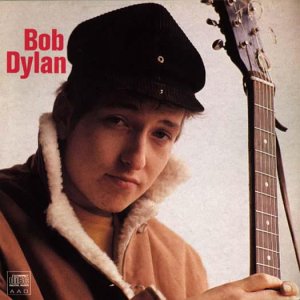
1:25pm: Is That What's Going On Up There?
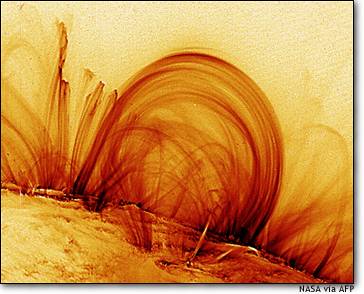
Loops of the sun:
"A snapshot taken by NASA's TRACE spacecraft shows loops of hot, electrified gas rising from the surface of the sun. The loops follow magnetic field lines and can span a length of 250,000 miles, or about 30 times the diameter of Earth. This image, made using ultraviolet light, was released by NASA on May 15." (From MSNBC The Week In Pictures)
5:51pm: Look Out Below, A Snow of Volcanic Ash...
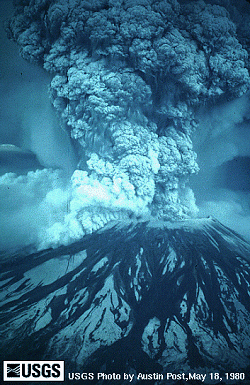
On this date in 1980, at 8:32 a.m. Pacific Time, Mount St. Helens, a volcanic peak in southwestern Washington, suffered a massive eruption, killing 57 people and devastating some 210 square miles of wilderness. (From The History Channel)
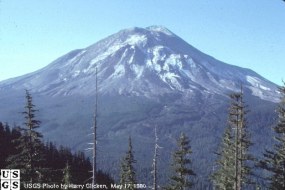
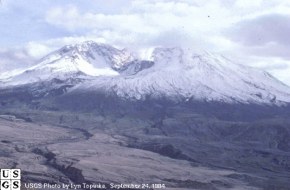
Midnight: ...Better Late Than Never
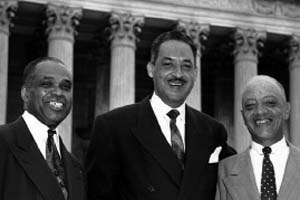
Thurgood Marshall (center) with James Nabrit Jr.
and George E.C. Hayes after their victory in the
Brown v. Board of Education case before the
Supreme Court, May 17, 1954.
Photograph courtesy of UPI / Corbis-Bettmann
It was 48 years ago today that the Supreme Court struck down the doctrine of "Separate But Equal" originally established in the 1896 case Plessy v. Ferguson. In its landmark decision in Brown v. Board of Education of Topeka, Kansas, Chief Justice Earl Warren's majority opinion effectively overruled Plessy, finding that "...in the field of public education, the doctrine of "separate but equal" has no place. Separate educational facilities are inherently unequal."
Brown v. Board of Ed.. was a major step forward for the civil rights movement of the fifties and sixties. Thurgood Marshall, himself later appointed to the Supreme Court, argued and won the landmark decision, which eventually forced desegregation of public schools--and all public facilities--in all states. It has been 48 years since Brown v. Board of Ed. was decided, and there is still much resistance in the world, but this landmark decision opened the door and offered hope for a better society.
9:47am: It ain't over till...oh, it's over?
GAME RECAP- TUES. 5/14: TWI-NIGHT DOUBLE-HEADER: MO'S AMIGOS grappled with adversity in numerous guises this wind- and rain-swept night beneath the flourescent glare of truth and the lead-based echo of yesterlore. The sea was angry that day, my friend...wait, that's Seinfeld. Okay, here's the skinny:
PILGRIM: Er...we lost.
IDIOT: But you had a double-header; Shirley you fared better in the nightcap?
PILGRIM: We did, we struck out a lot and got beat quicker. (And don't call me surely.)
DOG: Arf!
SLICE: Details, details, my friend; the glue is in the details!
PILGRIM: The glue was in our batting gloves, last night. We didn't hit our weight.
DOG: Arf!
PILGRIM: We couldn't hit the ocean if we were standing on the beach.
BARNES: Well, we've had a drought, the tides are down.
SLICE: The sea was angry that day, my friends.
IDIOT: That's Seinfeld.
SLICE: Oh, right you are...
DOG: Arf!
IDIOT: But what about your pitcher extrodinaire, what's his name, Chrissie Evert?
PILGRIM: No, that's the ex-quarterback for the Rams. Knocked Jim Rome on his keister for saying that once too often, though, so you might want to keep it down. And if you are suggesting the adverse conditions may somehow have deterred our champior hurler from the fray, you are sadly mistaken. (Word up: he had to work.)
IDIOT: Oh, sorry 'bout that.
PILGRIM: Yes, well, it was unfortunate. Totally different game with him in there chucking low line-drive strikes at the knees. We call him "Whiff."
BARNES: All the strikeouts?
PILGRIM: Well, that too. But if you stood near him after two beers and a cheesesteak hoagie you would understand.
DOG: Arf!
SLICE: Oh, look who's barking. Must be you haven't sampled any of your own ungodly emanations, lately.
DOG: (Hey, lay off, I'm a dog for chrissakes. You feed me shit, I'm gonna smell like shit...)
PILGRIM: Anyway, the Scentsational Shoppe (for thus was our opponent named) came at us in the first game with some old geezer of a pitcher. But in the pregame warmups he was windmilling like a stadium vendor flipping peanuts to the riffraff in the upper deck. He came out for the first inning and the modified windup slowed his delivery somewhat, and we were able to bang out some hits, and runs. Problem was, they figured out our own pitcher pretty quick, too, and some of them must be sporting some pretty ugly black-and-blues this morning.
BARNES: You mean he hit them?
PILGRIM: Hell no. I'm talking about their shoulders.
SCOOBY: ('Rink aRout it...)
SLICE: Oh, sweet jesus, now we have to decipher Scooby-speak?
PILGRIM: Yes, our old friend Matthew Lillard (Mo's waiter in the early '90s before hitting the big time in Serial Mom, Hackers, Scream (as the killer!), etc., the list goes on, is playing Shaggy in the forthcoming Warner Bros. Scooby-Do, also starring Sarah Michelle Gellar, Freddie Prinze, Jr., and Linda Cardellini.

(Click Photo For Scooby-Doo Website) TM and © 2002 Warner Bros.
SCOOBY: 'rAt's 'right!
SLICE: Oh, jesus.
PILGRIM: Meantime, we do have some good news to share from the experience. We picked up 2 new players from the expansion pool: Ken Begasse, who made some dazzling plays in right-center field, and saved a bunch of runs; and our own Paolo, who shored up the defense in Rod-Man's absence in left-center, and who, by the way, has a GUN! for an arm out there.
IDIOT: Okay. What about the 2nd game?
PILGRIM: Second verse, same as the first...
SLICE: That bad?
PILGRIM: Worse, actually. We can't sing like Herman's Hermits.
IDIOT: And they can hit as good as you?
PILGRIM: You're not as dumb as you look. And they had a guy on the mound throwing heat.
BARNES: Heat? You mean fastballs?
PILGRIM: No, heat, you idiot, like from a vent. Yes, fastballs!
IDIOT: Wait, I'm Idiot.
PILGRIM: You've got that right, but I wouldn't go bragging about it. Anyway, this guy was throwing very fast. We couldn't get around very well on him; finally adjusted a little bit and scored some runs, but we also gave up a bunch. Still, Al did a serviceable job on the mound in the second game, and was getting the hang of it after a while.
SLICE: The score of that one?
PILGRIM: I think that one was 10-4 or so.
SCOOBY: 'rOuch!
PILGRIM: Shutup, Scooby. Don't you have some slippers to find?
IDIOT: So, a bummer complete.
PILGRIM: You have a way with words. (Don't give up your day job.)
2:09am: Lions And Tigers And Bears, Oh My!
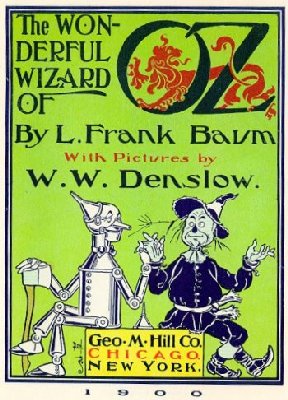
L. Frank Baum was born on May 15, 1856, in Chittenango, NY (near Syracuse). He was, of course, the author of "The Wonderful Wizard of Oz," one of the most influential creative works in history. Of course, it is chiefly through MGM's Judy Garland/Ray Bolger/Jack Haley/Bert Lahr-starring, George Cukor/Victor Fleming/King Vidor-directed film adaptation of his book that the story became well-known; how many people have actually read "The Wonderful Wizard Of Oz" as opposed to having only seen the film. But, what a film!
2:25am: 198 Years Ago...What's Out There?
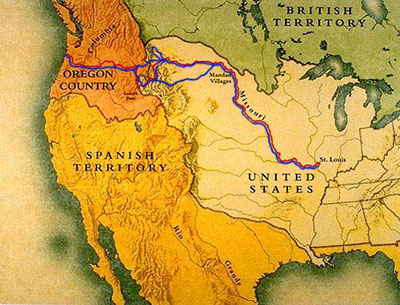
The Lewis & Clark Expedition set out on May 14, 1804
(Red=Out Route; Blue=Return Route)
One year after the United States doubled its territory with the Louisiana Purchase, the Lewis and Clark expedition leaves St. Louis, Missouri, on a mission to explore the Northwest from the Mississippi River to the Pacific Ocean.
Even before the U.S. government concluded purchase negotiations with France, President Thomas Jefferson commissioned his private secretary Meriwether Lewis and William Clark, an army captain, to lead an expedition into what is now the U.S. Northwest. On May 14, the "Corps of Discovery," featuring 28 men and one woman--a Native American named Sacajawea--left St. Louis for the American interior.
The expedition traveled up the Missouri River in six canoes and two longboats and wintered in Dakota before crossing into Montana, where they first saw the Rocky Mountains. On the other side of the Continental Divide, they were met by Sacajawea's tribe, the Shoshone Indians, who sold them horses for their journey down through the Bitterroot Mountains. After passing through the dangerous rapids of the Clearwater and Snake rivers in canoes, the explorers reached the calm of the Columbia River, which led them to the sea. On November 8, 1805, the expedition arrived at the Pacific Ocean, the first European explorers to do so by an overland route from the east. After pausing there for winter, the explorers began their long journey back to St. Louis.
On September 23, 1806, after two and a half years, the expedition returned to the city, bringing back a wealth of information about the largely unexplored region, as well as valuable U.S. claims to Oregon Territory. (From The History Channel)
*Please Note: Lewis & Clark are not to be confused with Martin & Lewis, Rowan & Martin, Abbot & Costello, Sam & Dave, Cheech & Chong, and especially not Mason & Dixon, whose own exploratory adventure preceded theirs by 41 years, having been conducted between November, 1763 and October, 1767.
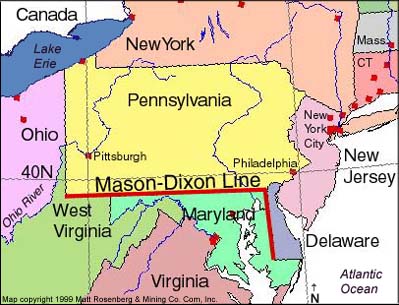
Noon: 1st Permanent English Settlement in The New* World
(*raising the question: New to Who?)
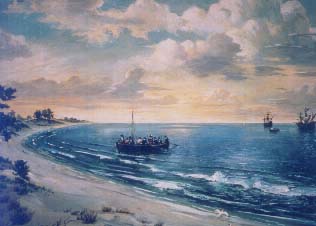
They're Here!
Anyway, on May 13, 1607 about 100 English colonists settled along the west bank of the James River in Virginia to found Jamestown-both named after King James I, who chartered the Virginia (London) Company-the first permanent English settlement in North America. Dispatched from England by the London Company, the colonists had sailed across the Atlantic aboard the Sarah Constant, Goodspeed, and Discovery, (and are not to be confused with the original Pilgrims (alas, religious separatists, and completely unrelated to our own, areligious, hero), who split from the Church of England and sailed aboard the Mayflower (after a brief and [one might presume] sobering sojourn in Amsterdam), founding Plymouth Colony, the first permanent European settlement in New England, in 1620.
Another excellent reference on Jamestown is The History Channel.
7:36pm: Yogi Berra, An American Treasure
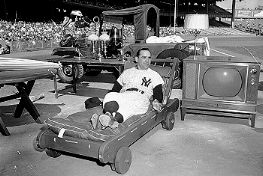
Lawrence Peter "Yogi" Berra was born on May 12, 1925 in St. Louis, Mo. and grew up on Elizabeth Street in a neighborhood called "The Hill".
Yogi got his "nickname" from Bobby Hofman, a childhood friend. While watching a movie about an Indian snake charmer, Bobby noted that Yogi had a striking resemblance to the hindu man, saying "That yogi walks like Lawdie ( Larry) Berra," and the name stuck. Joe Garagiola tells a funny story about Yogi giving Carmen an anniversary card signed 'Yogi Berra.' She asked him if he thought he had to sign his last name so she wouldn't think it came from some other Yogi.
Yogi went on to become a Fifteen-time All Star, winning the AL MVP three times, in 1951, 54 and 55. He played in 14 World Series and holds numerous World Series records including most games by a catcher (63), hits (71), and times on a winning team (10), first in at bats, first in doubles, second in RBI's, third in home runs and BOB's. Yogi also hit the first pinch hit home run in World Series history in 1947.
Yogi was elected the the National Baseball Hall of Fame in 1972.
Yogi Berra's second claim to fame is for being one of the most quoted figures in the sports world. He is credited with coining the deceptively simplistic observation, "It ain't over till it's over." But he's also known for his flubs. Here are some of the most notorious of these:
"This is like deja vu all over again."
"You can observe a lot just by watching."
"He must have made that before he died." -- Referring to a Steve McQueen movie.
"I want to thank you for making this day necessary." -- On Yogi Berra Appreciation Day in St. Louis in 1947.
"I'd find the fellow who lost it, and, if he was poor, I'd return it." -- When asked what he would do if he found a million dollars.
"Think! How the hell are you gonna think and hit at the same time?"
"You've got to be very careful if you don't know where you're going, because you might not get there."
"I knew I was going to take the wrong train, so I left early."
"If you don't know where you are going, you will wind up somewhere else."
"If you can't imitate him, don't copy him."
"You better cut the pizza in four pieces because I'm not hungry enough to eat six."
"Baseball is 90% mental -- the other half is physical."
"It was impossible to get a conversation going; everybody was talking too much."
"Slump? I ain't in no slump. I just ain't hitting."
"A nickel isn't worth a dime today."
"Nobody goes there anymore; it's too crowded."
"It gets late early out there." -- Referring to the bad sun conditions in left field at the stadium.
"Glen Cove." -- Referring to Glenn Close on a movie review television show.
Once, Yogi's wife Carmen asked, "Yogi, you are from St. Louis, we live in New Jersey, and you played ball in New York. If you go before I do, where would you like me to have you buried?" Yogi replied, "Surprise me."
"Do you mean now?" -- When asked for the time.
"I take a two hour nap, from one o'clock to four."
"If you come to a fork in the road, take it."
"You give 100 percent in the first half of the game, and if that isn't enough in the second half you give what's left."
"90% of the putts that are short don't go in."
"I made a wrong mistake."
"Texas has a lot of electrical votes." -- During an election campaign, after George Bush stated that Texas was important to the election.
"Thanks, you don't look so hot yourself." -- After being told he looked cool.
"I always thought that record would stand until it was broken."
"Yeah, but we're making great time!" -- In reply to "Hey Yogi, I think we're lost."
"If the fans don't come out to the ball park, you can't stop them."
"Why buy good luggage? You only use it when you travel."
"It's never happened in the World Series competition, and it still hasn't."
"How long have you known me, Jack? And you still don't know how to spell my name." -- Upon receiving a check from Jack Buck made out to "bearer."
"I'd say he's done more than that." -- When asked if first baseman Don Mattingly had exceeded expectations for the current season.
"The other teams could make trouble for us if they win."
"He can run anytime he wants. I'm giving him the red light." -- On the acquisition of fleet Ricky Henderson.
"I never blame myself when I'm not hitting. I just blame the bat, and if it keeps up, I change bats. After all, if I know it isn't my fault that I'm not hitting, how can I get mad at myself?"
"It ain't the heat; it's the humility."
"The towels were so thick there I could hardly close my suitcase."
"You should always go to other people's funerals; otherwise, they won't come to yours."
"I didn't really say everything I said."
11:08pm: Lion Sonuva...

WHERE: Kalahari Gemsbok National Park, South Africa
WHEN: 1995
PHOTOGRAPHER: Chris Johns
“On the windswept frontier between two nations, a lion patrols the dry Nossob riverbed, center of a vast refuge for big game. Here South Africa’s Kalahari Gemsbok National Park is joined by a fenceless border with Botswana’s larger Gemsbok National Park.”
—From “A Place For Parks in the New South Africa,” July 1996, National Geographic magazine.
10:56pm: Missing JazzFest and JazzJest!
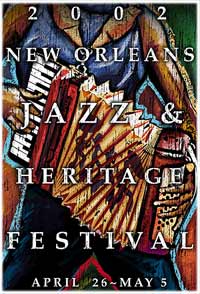
It's JazzFest time, last weekend and this, and the first time since '98 I'm not there with my pals Rand & Duncan & Mello. Couldn't afford it this year. And to make things worse, Rand & Gillian & my goddaughter Indigo invited Dunc and me up to Gillian's camp in the mountains, and Duncan and I were gonna go for the long weekend, JazzJest and Frisbee-Golf in the woods. But, alas, the forecast was snow and rain, plus I'm basically a hermit. Fact is I plain chickened out. Oh well, another good time I'm not having. Apologia to my pals Rand & Gillian, it's probably sunny and 78 up there!
Meanwhile, I've been listening all week to live simulcasts online from New Orleans, and you can listen to WWOZ-FM LIVE if you like, as well.
It's JazzFest, enjoy!
p.s. Special greetings to my Chef Crew, out there about 25 rows from the front of the Acura Stage. Sorry we missed you this year, guys.